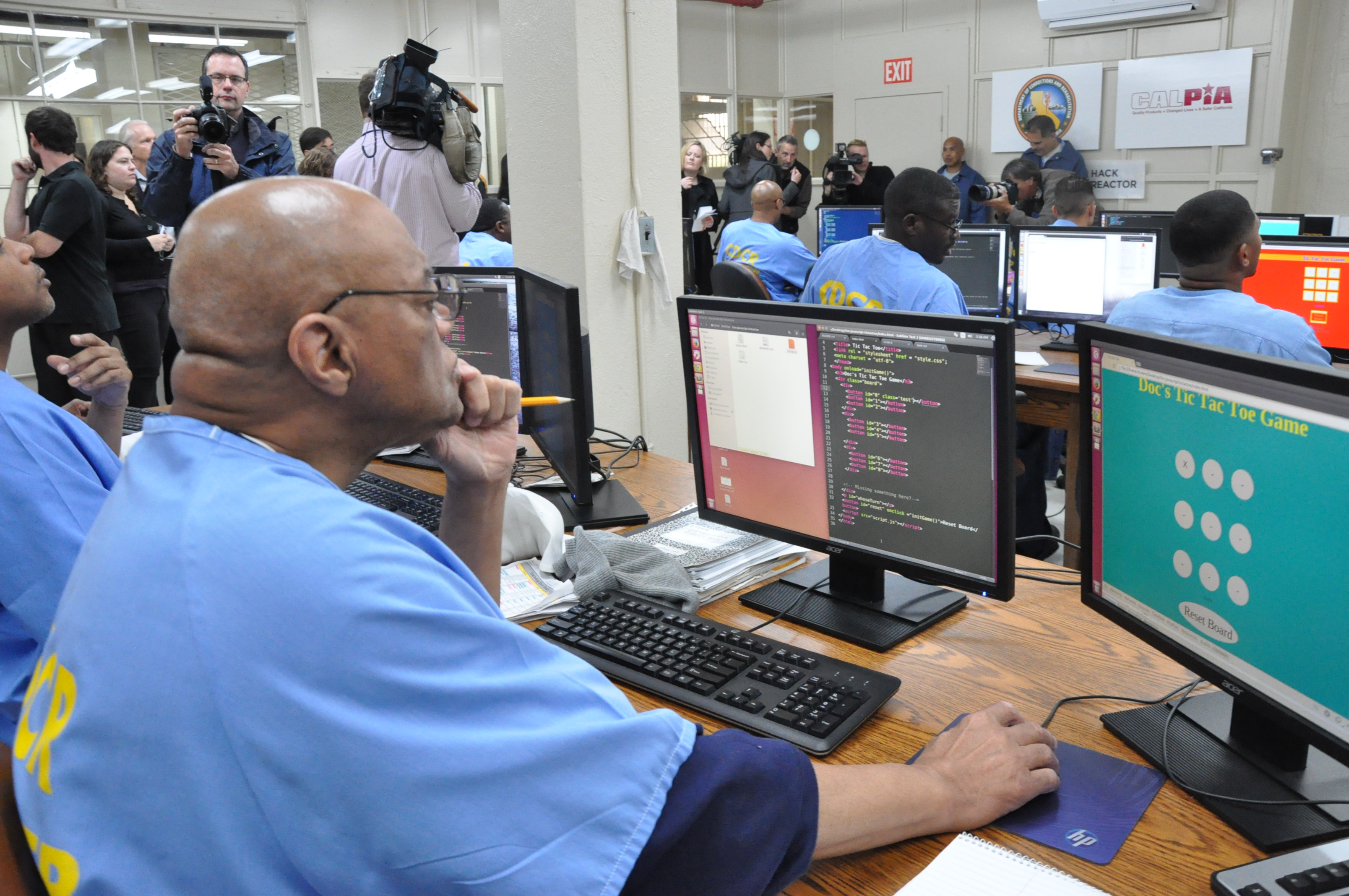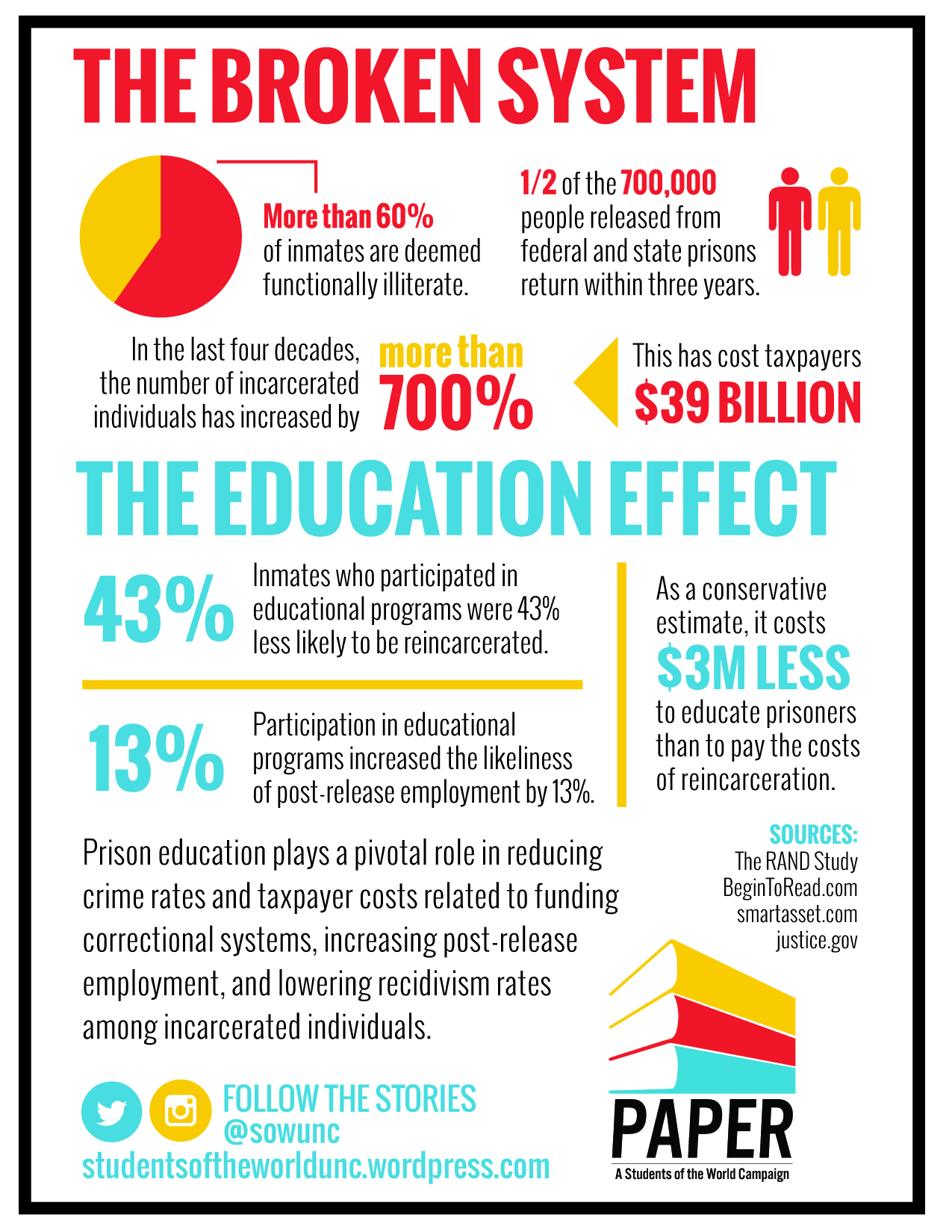The concept of rehabilitation is a fundamental part of the prison system, especially in the United States. Most criminals are, ideally, educated and rehabilitated before returning to society — assuming they don’t have a life sentence. For the most part, we operate under the premise that convicted criminals can learn the errors of their ways and go on to lead a better life for both themselves and society at large. That’s the idea, anyway.
But the reality is that an overwhelming majority of convicted criminals are repeat offenders. In fact in the United States, the National Institute of Justice found that within five years of release, over 75 percent of individuals in a study that contained over 400,000 subjects, were rearrested. According to the International Centre for Prison Studies this year, the global prison population consists of over 10.5 million individuals, 2.2 million of which are in the United States.
So, crime rates are a problem. Growing prison populations are a problem. And current rehabilitation efforts don’t seem to be working very well. What’s virtual reality got to do with any of that?
Revolutionizing Rehabilitation
“At Virtual Rehab, we are developing a powerful tool that would rehabilitate rather than just punish,” says Dr. Raji Wahidy, Founder and CEO of Virtual Rehab. “We believe that putting a kid in the corner does not teach them how to be a better person but rather teaches them not to get caught.”
Through the use of a combination educational initiatives, reenactments, simulations, correctional programs, skill building, and more, the initiative is designed to be both far-reaching and effective. We’ve already seen how VR is being used to try and make a difference for homelessness, abortion, domestic abuse awareness, and making people feel real emotions. It’s even being used now to revolutionize education, with the U.S. Department of Education contributing over half a million dollars in funding for a simulation challenge contest. The uses for VR in the prison system are already being reported on in some cases as well, with Virtual Rehab helping spearhead the concept.
“Every person in life deserves a second chance,” explains Dr. Wahidy. “Prisoners are no exception to this rule. In fact, they are the ones that are in most dire need for help, support, and development to become improved citizens upon their release. This can only be realized through correctional and rehabilitation programs that will prepare them to lead their future lives in a positive manner in order to avoid the possibility of repeated offenses.”
To understand how Virtual Rehab aims to improve things, it’s important to have a grasp on the current situation. For the most part, current efforts are monotonous, tedious, and downright boring.
“From a practical perspective, we all have sat in classes, where we got training for a certain subject (whether back in university, at a job, in a seminar, or any other means of learning), it is only when we get to the laboratory or practical part of the course that we start to better comprehend what is being taught,” says Dr. Wahidy. “Unfortunately, for inmates, sitting in a room or with a psychiatrist who tells them what they did wrong is not always the most productive way of getting the point across.”
That’s where VR has the ability to matter. Instead of just sitting in a classroom or talking with a therapist, inmates can have experiences. They can see a reversal of roles and see things from their victim’s perspective. They can learn actionable vocational skills that could be put to use in the real world once they get out. The premise is that reading a book and listening to a lecture just simply aren’t as effective as getting up and feeling like you’re actually doing something.
“Let’s take Automotive Body Repair as an example,” begins Dr. Wahidy. “Within the VR environment, the inmate will have several task options that he/she will need to fix. The inmate will select the task to proceed forward with and the real-life environment will then be built based on the selection made. Let’s say in this case, it is for replacing a car battery.”
He then goes on to explain how the act of replacing a car battery could be broken down into each of its core steps and recreated inside of an interactive VR environment. Locate the tools, open the hood, turn off the car, unhook the old battery, replace it with the new battery, and so on. The same could be applied to changing tires, changing oil, and various other tasks.
This marks a monumental shift for rehabilitation efforts not just because it opens up the possibilities in prisons, but it limits safety risks and cuts down on expenses. By creating a single interactive VR environment, every inmate can interact with the content in their own way, individually, without the need for additional supplies or instructors.
Going Behind Bars
This could be a good move for both the rehabilitation side of governments and prison institutions, as well as the VR industry as a whole. As the technology continues to evolve and become more immersive and powerful, these sorts of use cases should become more prominent as well.
“We are determined that this will introduce positive results based on the fact that VR therapy has for many years been used in clinics for the treatment of phobias and other anxiety disorders,” says Dr. Wahidy. “As part of our team, we will also have psychiatrists and health professionals (along with continuous consultation with government authorities as well as private prisons) who will be assisting us in further tailoring the tool to the patterns in prisoners’ behavior and psychological mindset.”
Anyone that has spent any length of time inside a VR headset knows how transformative an experience it can be, so it’s no wonder that Virtual Rehab has their sights set on such a lofty goal.
“The objective of Virtual Rehab is to educate rather than reprimand,” says Dr. Wahidy. “Leveraging Virtual Rehab, inmates will better learn the correct actions that they should take when confronted with the same scenarios that got them in trouble (since Virtual Rehab will allow them to experience such real-life scenarios). These actions taken as part of this virtual reality will even help in determining whether the inmate is ready for release or not. It is important that inmates are also prepared to face reality upon their release, and more importantly, it is in our best interest, as a community, that we train them professionally (if needed), so that they can become a productive part of our community.”
Dr. Wahidy is joined by Amal Azzeh as Chief Financial Officer, John Lester as Chief Technology Officer, and Courtney Couch as the Director of Marketing and Communications. While the program is not being used on any actual inmates yet, they did have their soft launch last month and are planning to officially launch in June of 2017 for U.S. locations. The team is said to have spoken with government officials and private prison operators about the prospect of being used in actual rehabilitation programs.
You can find out more information on the official Virtual Rehab website.
































